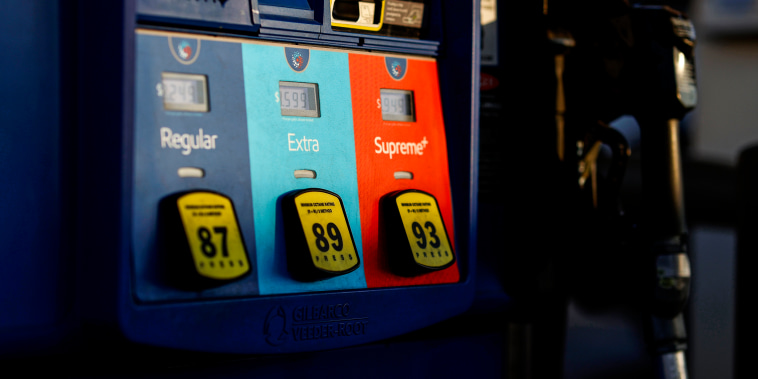The latest inflation report from the Bureau of Labor Statistics will land Wednesday morning, and it’s expected to show consumer prices grew at a steady pace in August.
Economists expect the data to show a 3.6% overall increase in inflation compared to a year ago. That would be the second time the year-on-year inflation measure has ticked upward since July after 12 consecutive months of declines.
On average, the experts expect a 4.3% year-over-year increase in core inflation, a measurement of cost increases that removes energy and food prices, which tend to be more volatile.
The Federal Reserve has been focusing on core inflation recently as it tries to crimp inflation.
Broadly speaking, the central bank’s effort seems to have been working. Overall inflation was 3.2% in July compared to July 2022, while core inflation was 4.7%.
Sarah House, a senior economist for Wells Fargo, said that inflation is gradually coming down but that it ticked higher in August because of cuts in oil production, which led to higher gasoline prices.
‘The most important thing [Wednesday] is what happens not just in terms of the core print, but what are the drivers underneath the surface,’ House said in an interview, referring to the inflation metric that excludes food and energy prices.
‘It seems like momentum is for lower inflation. We still have a lot of disinflationary pressures,’ meaning the current economic conditions are helping steadily drive inflation downward.
Moving cautiously in the right direction
Inflation has slowed significantly since last summer, when surging prices for fuels, housing and cars sent the measurement to 40-year highs. Still, it remains higher than it was throughout the 2010s. It’s also well above the Federal Reserve’s stated 2% target.
“The monthly rate of change in both headline and core CPI measures have moderated nicely in recent months, but some of the usual trouble spots remain — shelter, and costs for motor vehicle insurance, maintenance, and repair,’ wrote Greg McBride, the chief financial analyst for Bankrate. The CPI is the consumer price index.
The persistent inflation contributed to the dramatic increases in interest rates over the last year and a half. The Fed raised rates from just above zero in early 2022 to their current range of 5.25% to 5.50%. That’s the highest since 2001.
Because financial institutions use the benchmark U.S. interest rate to set their own interest rates, mortgage and credit card interest rates are also the highest they’ve been in decades. Interest rates have been historically low dating to the 2007-08 financial crisis, making it harder for people and businesses to borrow.
If the Labor Department report shows that inflation seems under control, the Fed is more likely to stop raising interest rates for the time being. That’s something investors and business leaders have wanted to see, because they’re worried the steep increases in rates will cause a recession.
The Fed’s moves were intended to stem inflation by slowing the economy. Still, the job market has stayed tight and wages have continued to increase, and there have been few signs that a recession is on the way.
“We’re seeing the economy overall hold off fairly well in the face of the most aggressive tightening cycle we’ve seen since the early 1980s,” House said.
That having been said, there have been signs the economy is slowing, and the effects of rising interest rate on the economy can take a long time to play out. And if inflation isn’t clearly on the decline, more rate hikes could follow before long.
‘The economy is seen as growing much faster in the current quarter than in the first half of the year,’ McBride wrote. ‘Getting core inflation to 2 percent won’t come quickly.’
